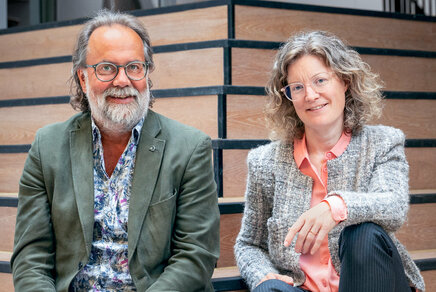Designing Interactive public displays for social interaction among nursing home residents
Kai Kang defended his PhD thesis at the department of Industrial Design on April 26th.

Positive peer relationship in nursing homes is an important component of residents’ quality of life. However, social interaction between residents is often limited, and relationships difficult to build. In recent years, we have witnessed the widespread use of interactive public displays (IPDs), which attract people’s attention and encourage mutual social engagement. For their PhD research, Kai Kang used IPDs to encourage social interactions between residents in nursing homes.
Starting with ‘Outlook’
Kang’s research commenced with a collaborative design project called ‘OutLook'. In this case, he used conventional user-centered design methods. OutLook was designed to be a series of gallery-like displays that continuously show images of real-time views. It aimed to attract users nearby by playing a slideshow and trigger communication through a ‘postcard-sharing’ metaphor.
To evaluate OutLook, a six-week field trial was performed in a Dutch nursing home. OutLook was found to promote social interactions to some extent, but the effects declined with time and the social impact was indirect and superficial.
Reading to Sharing
Guided by the initial results, Kang then conducted a user study to better understand nursing home residents’ media habits, preferred genres, and related social scenarios and barriers.
The results led Kang and his collaborators to augment residents’ daily experience of reading by designing an IPD system called Reading to Sharing (R2S). It is a system attached to public tables in nursing homes and aims to support residents’ self-entertainment and promote their communication. Residents are provided with a stamp-like tool to select printed content and further control the related online digital content.
For evaluation, R2S was tested via field trials in two stages. In Stage 1, twenty residents were invited in groups to experience R2S with the assistance of researchers or care workers. The result showed that R2S was a success as it kept group members engaged in content sharing and viewing. It was also found to be effective in catalyzing social interaction between the group members. Furthermore, R2S supported various levels of social interaction. However, there was still room to reduce their feelings of complexity and uncertainty.
In Stage 2, the upgraded version of R2S was deployed in a Dutch nursing home for residents to use without any external assistance. The result show that although the residents’ reactions varied with conditions, R2S had a positive impact on residents’ social behaviors. The participants’ perceived user experience of R2S was very positive.
Challenges
Kang’s research proved that IPD systems can be applied as a new form of intervention to enhance nursing home residents’ social interaction. They can be used as an open platform in public care environments to continuously facilitate residents’ social interaction throughout the day. The knowledge generated from this research includes a framework of key design factors, interaction patterns, conceptualized user types and interaction phases, and a model of for the design process, which could not only contribute to design and the HCI community, but also provoke a deeper understanding on other disciplines such as geriatric nursing.
Meanwhile, Kang identified many challenges due to the lack of specialized practices, understanding of residents, and design guidelines. Therefore, this research aims to verify this hypothesis and provide solutions for the challenges. The related knowledge is mainly generated from the design, development, and evaluation of prototype IPD systems.
Title of PhD thesis: “Designing Interactive Public Displays for Social Interaction among Nursing Home Residents”. Supervisors: Jun Hu, Caroline Hummels, and Bart Hengeveld.
Media contact
More on Health



Latest news


